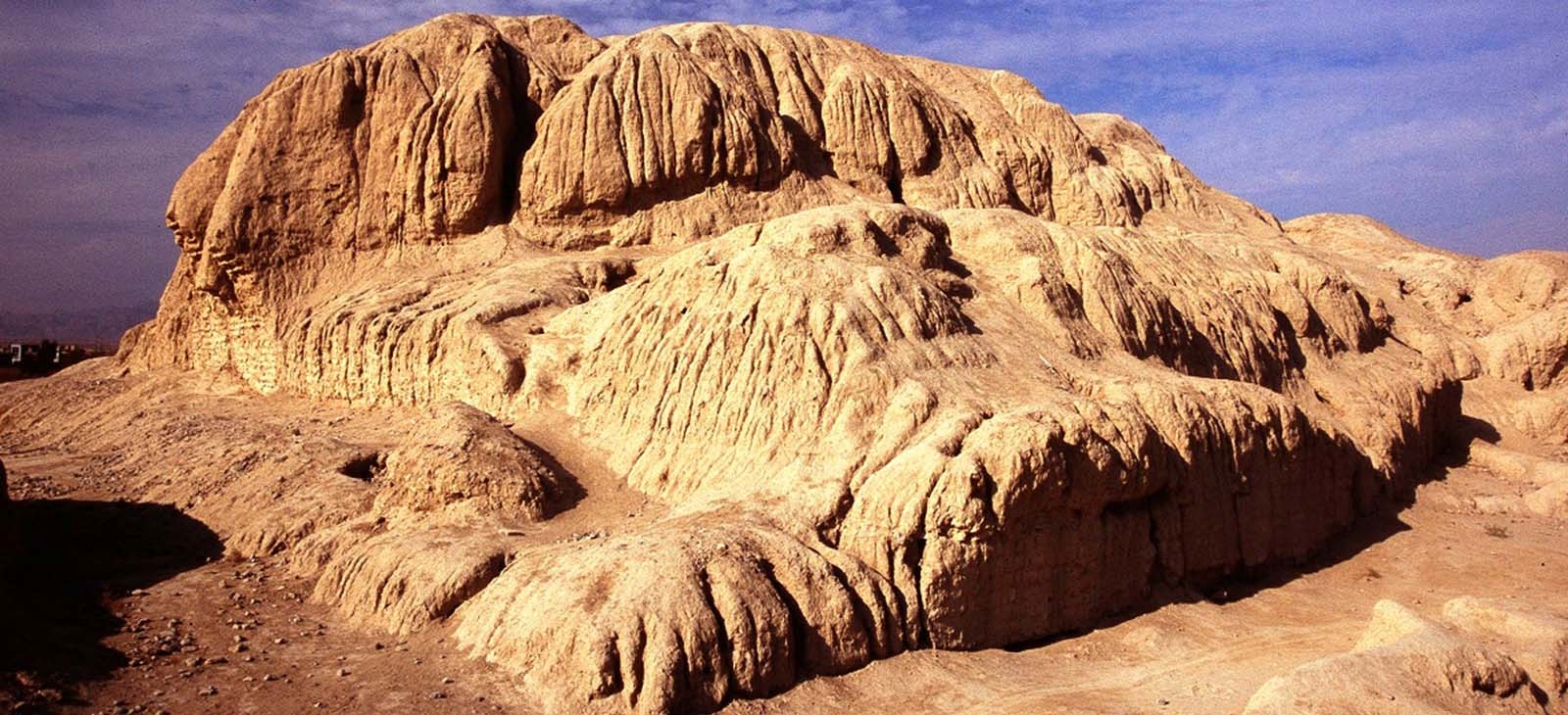Tepe Sialk is a large ancient archeological site (a tepe orPersian tappeh, "hill" or "mound") in a suburb of the city of Kashan, Isfahan Province, in central Iran, close to Fin Garden. The culture that inhabited this area has been linked to the Zayandeh River Culture. The Sialk ziggurat was built around the 3000 BC. A joint study between Iran's Cultural Heritage Organization, the Louvre, and the Institut Francais de Recherche en Iran also verifies the oldest settlements in Sialk to date back to 5500–6000 BC.
Tepe Sialk is a large ancient archeological site (a tepe orPersian tappeh, "hill" or "mound") in a suburb of the city of Kashan, Isfahan Province, in central Iran, close to Fin Garden. The culture that inhabited this area has been linked to the Zayandeh River Culture.
The Sialk ziggurat was built around the 3000 BC. A joint study between Iran's Cultural Heritage Organization, the Louvre, and the Institut Francais de Recherche en Iran also verifies the oldest settlements in Sialk to date back to 5500–6000 BC.
Sialk, and the entire area around it, is thought to have first originated as a result of the pristine large water sources nearby that still run today. The Cheshmeh ye Soleiman ("Solomon's Spring") has been bringing water to this area from nearby mountains for thousands of years. The Fin garden, built in its present form in the 17th century, is a popular tourist attraction. It is here that the kings of the Safaviddynasty would spend their vacations away from their capital cities. It is also here that Piruz Nahavandi (Abu-Lu'lu'ah), the Persian assassin of Caliph Umar, is buried. All these remains are located in the same location where Sialk is. Tepe Sialk was excavated for three seasons (1933, 1934, and 1937) by a team headed by Roman Ghirshman. Studies related to the site were conducted by D.E. McCown, Y. Majidzadeh, and P. Amieh. Excavation was resumed for several seasons between 1999 and 2004 by a team from the University of Pennsylvania and Iran's Cultural Heritage Organizationled by Sadegh Malek Shahmirzadi called the Sialk Reconsideration Project.
Artifacts from the original dig ended up mostly at the Louvre, while some can be found at the British Museum, theMetropolitan Museum of Art in New York, and the National Museum of Iran and in the hands of private collectors. These artifacts consisted of some very fine painted potteries. This ancient hill is located 3 km to the south of Kashan. Studying the clay dishes discovered in this area revealed that its civilization dates back to 4500 BC. Other objects discovered in the area include clay tablets belonging to Elamite era. Near the central hill of Sialk, two graveyards, conventionally called A and B, have been discovered. The objects found from the excavations include iron weapons, swords, lances and piped dishes. The objects found in graveyard A date back to 2000 years BC and those in graveyard B date back to early first millennium or late second millennium BC.

